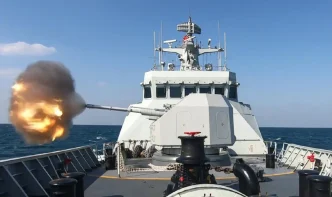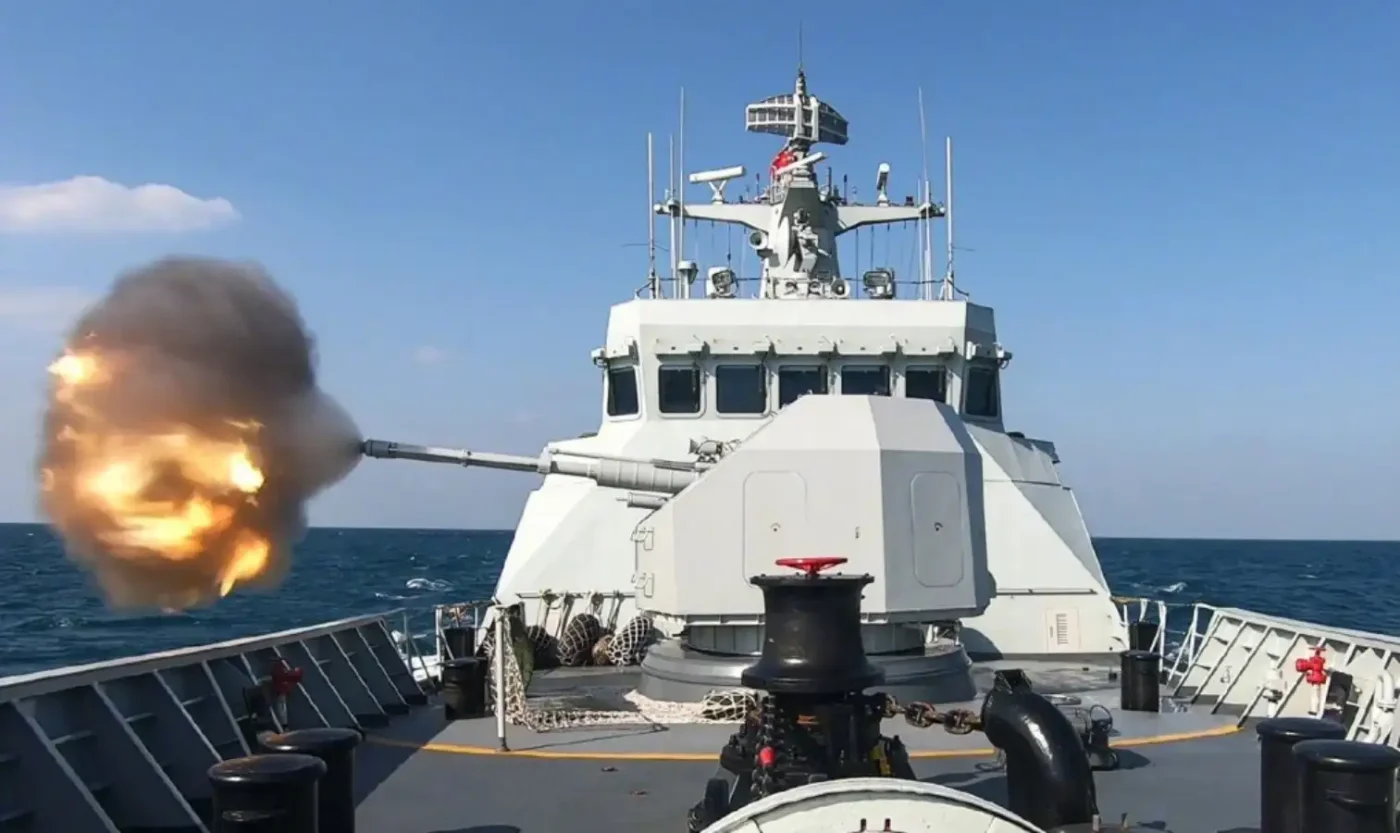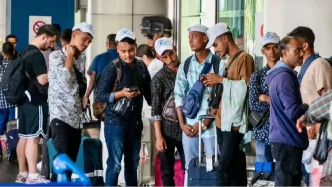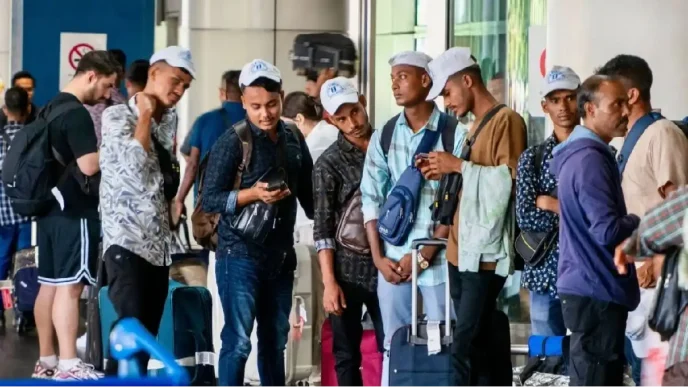On Saturday, June 2, 2025, the defense chiefs of Japan, the United States, Australia, and the Philippines convened in Singapore for a pivotal meeting, voicing shared alarm over China’s ongoing efforts to alter the status quo through force in the East and South China Seas. The gathering, held on the sidelines of the Shangri-La Dialogue, underscored a growing alignment among the four nations amid rising regional tensions.
The 50-minute discussion brought together Japan’s Defense Minister Gen Nakatani, U.S. Defense Secretary Pete Hegseth, Australian Defense Minister Richard Marles, and Philippine Defense Secretary Gilberto Teodoro. Their talks focused on deepening cooperation to counter what they described as unprecedented challenges to maritime security in the Indo-Pacific region.
A Unified Stance Against Regional Instability
The defense chiefs issued a joint statement following the meeting, expressing “serious concern” over China’s unilateral actions. The statement highlighted a collective commitment to a “free and open Indo-Pacific,” a vision that has become a cornerstone of strategic dialogue among these nations. Nakatani, opening the talks, urged for stronger four-way collaboration, pointing to China’s intensified activities in disputed waters. Hegseth echoed this sentiment, emphasizing the need for unity in the face of what he termed China’s “unprecedented military buildup.”
This meeting marked the third ministerial-level defense discussion among the quartet, following their last engagement in Hawaii in May 2024. Notably, it was the first such gathering under the second administration of U.S. President Donald Trump, signaling a continuity of focus on regional security despite shifts in domestic political landscapes.
Strategic Collaboration and Future Plans
The joint statement outlined four key areas for future collaboration: aligning defense investments, enhancing information-sharing, bolstering cybersecurity, and improving operational coordination and interoperability. The chiefs also committed to advancing maritime and air domain awareness, with plans to explore joint intelligence, surveillance, and reconnaissance activities in the East and South China Seas—areas long contested due to overlapping territorial claims and strategic importance.
These initiatives reflect a broader strategy to build a networked defense framework capable of responding to complex security challenges. For instance, improved interoperability could facilitate joint military exercises, while shared intelligence might enable quicker responses to potential flashpoints in disputed waters. The focus on cybersecurity also acknowledges the growing role of digital threats in modern conflicts, particularly in a region where state-sponsored cyber activities have been a point of contention.
Philippine Perspective: A Sharper Critique
Philippine Defense Secretary Gilberto Teodoro was particularly vocal during the Shangri-La Dialogue, using the platform to challenge China’s narrative on disputed waters in the South China Sea, where Manila has faced repeated confrontations with Chinese vessels near the Spratly Islands and Scarborough Shoal. Teodoro has previously accused Beijing of employing a “propaganda spiel” to justify its actions, arguing that such rhetoric masks a deeper trust deficit in bilateral relations. His remarks underscore the Philippines’ frontline role in maritime disputes, with the nation often bearing the brunt of China’s assertive coast guard operations.
For the Philippines, collaboration with Japan, the U.S., and Australia offers not just strategic backing but also a diplomatic counterweight to China’s regional dominance. Manila’s participation in these talks signals a willingness to move beyond bilateral tensions with Beijing and embed its security concerns within a multilateral framework.
Trilateral Coordination: Japan, US, and Australia
In addition to the quadrilateral meeting, Japan, the United States, and Australia held a separate trilateral discussion on the same day, agreeing to enhance operational coordination among their command centers. This move suggests a layered approach to regional security, where smaller, more agile groupings complement broader alliances. The trilateral framework, which has been active for over a decade, focuses on practical measures—such as joint exercises and intelligence-sharing—that can be scaled up to include partners like the Philippines when needed.
This dual structure of engagement—quadrilateral and trilateral—illustrates the flexibility of these nations in addressing Indo-Pacific challenges. It also highlights Japan’s evolving role as a security partner, with Tokyo increasingly stepping out of its post-World War II pacifist stance to take on a more assertive posture in regional defense matters.
Context of the Shangri-La Dialogue
The timing of these meetings, coinciding with the Shangri-La Dialogue 2025, is significant. The annual security forum, hosted by Singapore, brings together defense leaders, policymakers, and experts from across the globe to discuss pressing geopolitical issues. This year’s event has seen pointed exchanges over maritime security, with Singapore’s own defense minister stressing that “going alone is not the answer to security questions.” Such rhetoric aligns with the collaborative spirit of the quadrilateral and trilateral meetings, reinforcing the idea that collective action is essential in a region as interconnected as the Indo-Pacific.
The Shangri-La Dialogue also provided a backdrop for public posturing. While the defense chiefs’ joint statement avoided naming China explicitly in some of its critiques—likely a diplomatic choice to avoid direct confrontation—Teodoro’s separate comments at the forum left little ambiguity about Manila’s stance. This duality of private consensus and public critique reflects the delicate balance these nations must strike in addressing China’s actions without escalating tensions into open conflict.
China’s Role and Regional Reactions
China, for its part, has consistently rejected accusations of unilateralism, framing its activities in the East and South China Seas as legitimate assertions of sovereignty. Beijing claims historical rights over much of the South China Sea, a position codified in its “nine-dash line” map, which overlaps with claims by the Philippines, Vietnam, Malaysia, and Brunei. In the East China Sea, tensions with Japan over the Senkaku Islands (known as Diaoyu in China) have flared periodically, often involving coast guard stand-offs and military posturing.
While China was not a party to Saturday’s meeting, its presence loomed large. Beijing often responds to such multilateral groupings with criticism, viewing them as attempts by the U.S. and its allies to encircle and contain its rise. Chinese officials attending the Shangri-La Dialogue have, in past years, dismissed frameworks like the quadrilateral dialogue as exclusionary and destabilizing. If this pattern holds, a formal response from Beijing may follow, likely reiterating its call for dialogue on its terms.
Other regional players, such as Vietnam and Indonesia, are also watching these developments closely. Though not part of this specific grouping, both nations have their own maritime disputes with China and may see the quadrilateral’s actions as a model—or a challenge—for their own security strategies. Hanoi, in particular, has balanced economic ties with Beijing against growing defense partnerships with the U.S. and Japan, a dynamic that could be influenced by the outcomes of this meeting.
Broader Implications for Indo-Pacific Security
The agreement to hold regular ministerial-level talks signals a long-term commitment to this quadrilateral framework, potentially elevating it to a formal alliance akin to the Quad (which includes India). While the current focus is on defense coordination, the emphasis on cybersecurity and information-sharing hints at a broader scope that could encompass economic and technological dimensions in the future. Such an evolution would align with the U.S.-led strategy of integrating security and economic policies to counter China’s Belt and Road Initiative and digital influence in the region.
For Japan, participation in these talks reflects a domestic shift toward greater military engagement, driven by public and political support for revising its pacifist constitution. Australia, meanwhile, continues to position itself as a key Indo-Pacific player, leveraging its geographic proximity and historical alliances to shape regional security architecture. The Philippines, often the smallest player in such groupings, gains a platform to amplify its concerns, while the U.S. under Trump’s second term appears intent on maintaining—if not intensifying—its focus on countering China’s regional ambitions.
Looking Ahead: Challenges and Opportunities
As these four nations move forward with their collaborative plans, several challenges remain. Coordinating defense investments and operational activities across diverse military systems and national priorities is no small task. Cybersecurity cooperation, while critical, raises questions of trust and data sovereignty, particularly for smaller nations like the Philippines. Moreover, any joint surveillance or reconnaissance activities in contested waters risk provoking direct responses from China, testing the resolve of this partnership.
Yet, the opportunities are equally significant. A more cohesive quadrilateral framework could deter aggressive actions in the Indo-Pacific, providing a stabilizing force in a region prone to volatility. Public sentiment in each nation—ranging from wariness in Japan to frustration in the Philippines—will also shape how far these governments can push their defense agendas. For now, the Singapore meeting has laid a foundation for deeper ties, but its true impact will depend on the concrete actions that follow.
As the Indo-Pacific navigates these turbulent waters, the question remains: can this alliance translate its shared vision into a lasting bulwark against regional instability? Only time, and the unfolding dynamics of power in Asia, will provide the answer.
















